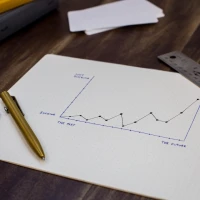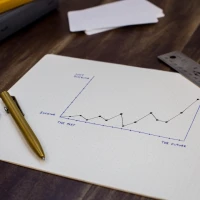Delving into the world of mathematics, linear graphs stand as the backbone of algebra and provide a visual representation of equations that depict a wealth of information. Linear graphs have the power to illustrate the relationship between two variables with simplicity and precision. With our ultimate worksheet, we are set to unveil the inequalities and subtleties within these graphs, ensuring you not only grasp their significance but also master their intricacies. Let’s embark on this analytical journey to not only learn about graphing but to thrive in it.
Graphing is not just an academic exercise; it’s a critical thinking skill that extends its roots into various professional fields, including economics, engineering, and social sciences. By understanding and mastering linear graphs, learners unlock the door to a clearer comprehension of data, trends, and patterns. The ultimate worksheet we present is designed to guide you through the nuances of linear graphs step by step, leading you to a more profound understanding of this central mathematical concept.
Understanding the Basics of Linear Graphs
Before we jump into the complexities of inequalities and the iterative process of mastering these graph of rational functionsical representations, let’s establish a firm foundation on what linear graphs actually represent.
What are Linear Graphs?
Linear InDesign graph tutorialss are visual representations of linear equations in two variables, typically x and y. The graph of a linear equation is always a straight line. Each point on this line is a solution to the equation. In the world of mathematics and applied sciences, the significance of this cannot be overstated.
The Role of the Coordinate Plane
The coordinate plane is the “stage” where linear graphs are showcased. It consists of two perpendicular number lines: the horizontal x-axis and the vertical y-axis. The intersection of these axes is known as the origin, marked as (0, 0).
Plotting Points and the Importance of Scale
To master plotting points on a linear graph, the importance of scale needs to be underlined. The scale determines the distance between each tick mark on both axes and should be consistent to maintain the accuracy of the graph bold and the beautiful comings and goings.
Key Components of a Linear Graph
Every linear graph is characterized by a few fundamental elements that dictate its form and convey its mathematical story.
The Slope
The slope of a line indicates its steepness and direction. It can be positive, negative, zero, or undefined. Calculating the slope ((m)) involves determining the ratio of the rise (change in y) over the run (change in x).
The Y-intercept
Another pivotal point on a linear graph is the y-intercept. This is where the line crosses the y-axis. The y-coordinate at this point is significant because it is where the value of x is zero.
The Equation of a Line
The equation of a line in slope-intercept form is (y = mx + b), where (m) represents the slope, and (b) represents the y-intercept. This form is particularly conducive to graph theory for beginnersing.
The Intersection of Linear Graphs and Inequalities
Inequalities are related yet distinct from equations. They indicate a range of values rather than a specific solution. When graphing inequalities, the relationship between the two variables is depicted as a shaded region instead of just a line.
Types of Inequalities
Inequalities can be strict (with symbols such as < and >) or non-strict (with symbols such as ≤ and ≥). The graph of a strict inequality will have a dashed line, while a non-strict inequality will have a solid line.
Shading the Correct Region
Understanding which region to shade requires analyzing the inequality. The shaded region represents all the possible solutions to the inequality. It is essential to test points to ensure the correct area is shaded.
Crafting the Ultimate Worksheet for Linear Graphs
Now that we understand the essence of linear graphs and how they interact with inequalities, let’s explore the structure of an ultimate worksheet.
Focused Practice Problems
A carefully designed worksheet includes problems that incrementally increase in difficulty. This gives students the ability to build confidence as their skills grow.
Breaking Down into Sections
- Identifying Slopes and Intercepts: Exercises that focus on identifying these key components from both equations and graphs.
- Graphing from Equations: Translating algebraic expressions into visual form.
- Graphing Inequalities: Demonstrating how to handle inequalities on the coordinate plane.
- Real-Life Applications: Connecting theoretical graphing skills to practical scenarios.
Step-by-Step Solutions
Including clear and detailed solutions to problems helps students understand the logic and steps involved in tackling graphing challenges.
Applying Your Knowledge: Practical Examples and Exercises
The real power of any educational material lies in the learner’s ability to apply the concepts to various scenarios. Let’s examine how this worksheet can guide the process.
Graphing Lines from Equations
Each equation presents an opportunity to extract the slope and intercept, set up a graph, and accurately draw the line.
Interpreting Graphs
Understanding the story behind the data involves making sense of the slope, intercepts, and the overall trend the graph represents.
Exploring the Connection between Formulas and Graphs
The worksheet shall provide exercises that encourage students to toggle between the algebraic and graphic representations seamlessly.
Making the Most of the Ultimate Worksheet: Tips and Strategies
- Practice Regularly: Consistency is key when mastering the skill of graphing.
- Check Your Work: Always step back to ensure that the plotted points and lines correspond to the equation.
- Use a Ruler: For accuracy in drawing straight lines, using a ruler is imperative.
- Learn from Mistakes: Review errors to prevent them in the future.
Comparison Chart: Understanding Different Forms of Linear Equations
To facilitate comprehension, a comparison chart outlines the key differences between various forms of linear equations.
| Equation Form | Purpose | Characteristics |
|---|---|---|
| Slope-Intercept Form | Quick Graphing | Straightforward identification of slope and y-intercept |
| Point-Slope Form | Connecting Two Points | Utilizes a known point and slope |
| Standard Form | General Use | Often used in higher mathematics and applications |
By understanding these forms, students can choose the most efficient method for their graphing tasks, depending on the context.
Concluding Thoughts: The Power of a Good Graph
Graphing is more than a mere mathematical routine; it is a universal language that reveals the harmony within numbers and their relations. With our comprehensive, SEO-optimized worksheet, we aim to provide a transformative learning experience that does more than just teach – it inspires.
Remember, mathematics is a skill best honed with diligence and curiosity. The journey in mastering linear graphs and bridging the gap revealed by inequalities is one of discovery and intellectual fulfillment. Embrace the process with our ultimate worksheet, and watch as the lines on the graph translate into lines of success in your academic and professional endeavors.










